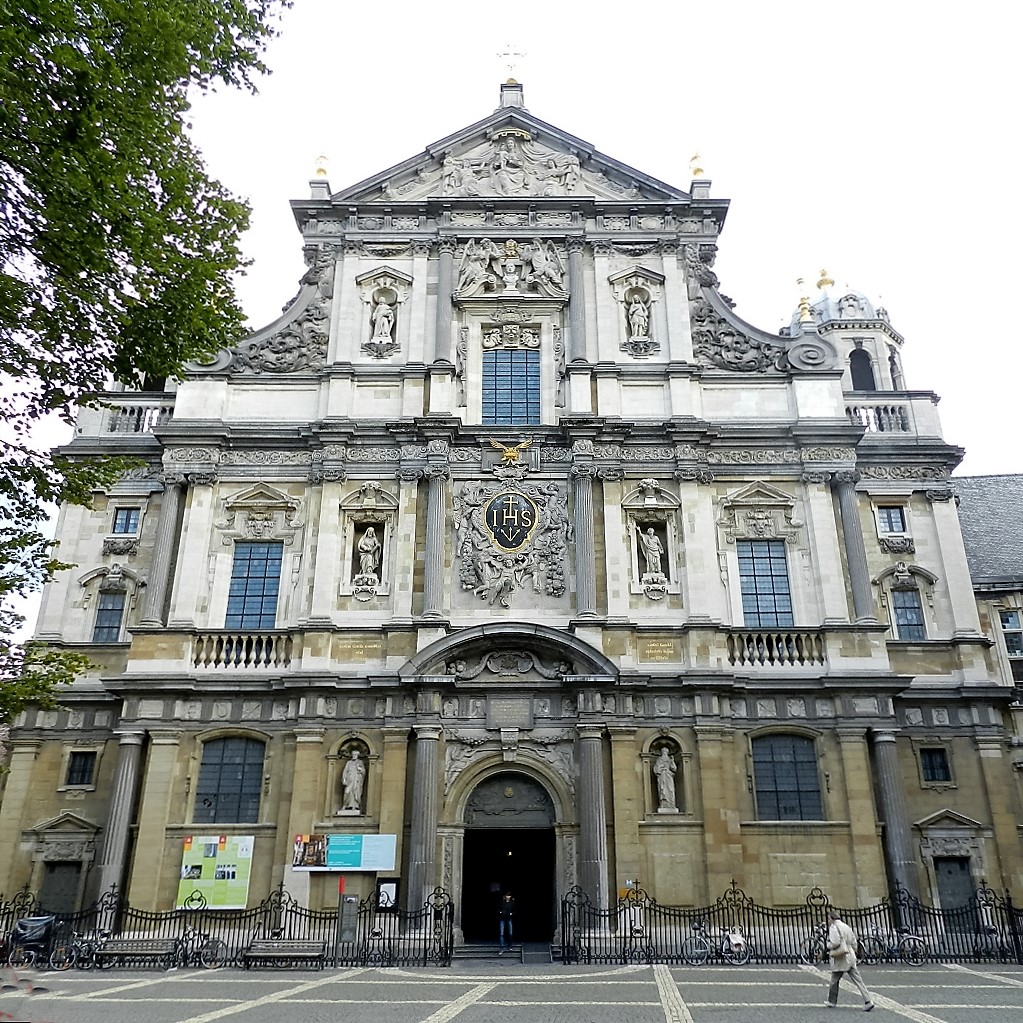The Antwerp jesuit church, a revelation.
Names of streets
Since everything is Jesuit here from the very beginning this square was named after its owner-occupiers: Jezuïetenplein [Jesuit Square] with next to it Jezuïetenrui [Jesuit Canal], which before had been Ankerrui [Anchor Canal], and Jezuïetenbrug [Jesuit Bridge].
The French Revolutionary Rule, which gladly alluded to the Jesuits’ naughty nickname, foxes, called square and canal ‘Vossenplein’ [Fox Square] and ‘Vossenrui’ [Fox Canal].
In 1883 the city library was opened in the former sodality building and right in front of it the statue of Hendrik Conscience, who died a bit later that same year, was inaugurated. At that occasion, the square got its definitive name, that of this popular Flemish writer, who is said to have ‘taught his nation to read’. Catholic Antwerpians had tried hard to have some street named after an academic Jesuit, such as Bollandus or Papebrochus. But in vain: Jezuïetenbrug [Jesuit Bridge] was called Leeuw van Vlaanderenstraat [Lion of Flanders Street, after Conscience’s most famous historic novel].
The small tunnel that links Jezuïtenrui [Jesuit Canal] with the church square, was officially known as Jezuïetengat [Jesuit Hole] until about 1960. The only street of which the name still refers to the Society of Jesus is Jezuïtenrui [Jesuit Canal].

